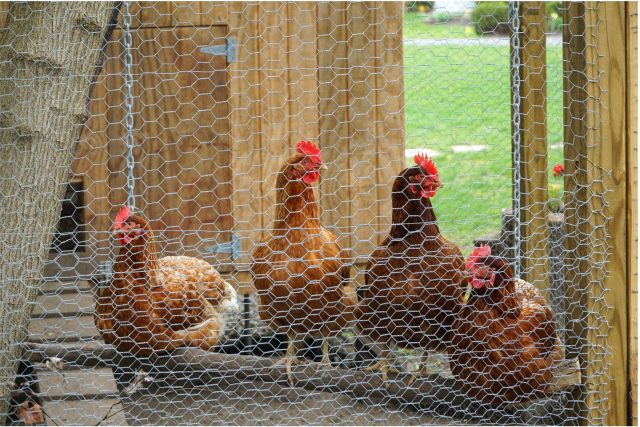Within the last decade, there has been an explosion of backyard chickens in both rural and urban neighborhoods. While the most popular types of pets in America are still by far cats and dogs, a growing number of Americans are seeking out chickens due to their utility and friendly nature. However, unlike other types of pets, owing chickens can have a steep learning curve.
When it comes to raising backyard chickens, families must first thoroughly research a variety of complex topics. Ari Sorkin, a backyard chicken owner, understands firsthand the challenges amateur chicken owners face when introduced to different chicken ownership facets. However, as someone with more than seven years of experience raising chickens, Ari Sorkin hopes to help these new owners more easily break into the world of backyard chicken ownership by sharing his comprehensive step-by-step introduction.
Step 1: Determine if Raising Chickens is Permitted in Your Area
If you live in an area classified as agricultural, raising backyard chickens will likely be permitted. However, if you live in an area zoned as residential or commercial, there may be restrictions in place against owning chickens. Ari Sorkin stresses the importance of checking with your local officials to determine if backyard chickens are permitted and what regulations apply. Some of the most common backyard chicken regulations include:
Regulation of roosters: Perhaps the most common regulation related to backyard chickens is the banning of roosters. Many communities do not allow roosters as they are often associated with a large degree of noise pollution.
Regulation of the total number of chickens: Many communities will limit the total number of chickens each household can keep, either by setting a flat limit of birds allowed or by using lot size to determine the max number of birds.
Containment requirements: It is not uncommon for some communities to require chickens be contained at all times in their coop or outdoor run.
Additionally, it’s worth noting that some municipalities will require households to obtain a permit in order to raise backyard chickens and pay either a one-time fee or an annual fee.
Step 2: Carefully Choose the Type of Chicken You Would Like to Raise
Today, there are over 50 breeds of large chickens farmers can choose from. With so many chicken breeds out there, it can be easy to feel overwhelmed by the selection. When choosing the ideal chicken breed, the most important things to consider are climate, egg production, and temperament. If you live in a colder region, you will be greatly limited in your selection of chicken breeds. However, those who live in warmer climates may be interested in purchasing a wide selection of chicken breeds, including specialty breeds such as Marans, Faverolles, or Cochins. Take your time researching the different chicken breeds and consider whether you are more interested in egg production or potentially breeding chickens. Some of the most popular breeds of chickens include:
Australorp: Australorp chickens are known as one of the most popular chicken breeds out there. They are dual-purpose birds (meaning they are used for both eggs and meat), are quite friendly and hardy against colder temperatures, and lay an impressive 250 large brown eggs a year.
Orpingtons: Buff Orpingtons chickens are known for their beautiful plumage and consistent egg laying. However, chicken farmers should know that the light colors of Orpington chickens make them more noticeable to predators.
Plymouth Rock Chickens: Plymouth Rock chickens are known for their calm demeanor and hardy temperament against colder temperatures. These birds are excellent layers and produce roughly 280 pinkish-brown eggs a year.
Step 3: Build a Chicken Coop
If you are planning on raising chickens, you’ll need to build a secure chicken coop in order to house them and keep them safe from predators. Chicken farmers can either buy a pre-built chicken coop or elect to build one themselves. Ari Sorkin states that whatever type of chicken coop farmers choose, they will need to ensure it is large enough to house their number of chickens, weatherproof, and has adequate protection from predators.
One of the most critical aspects of the chicken coop is its location on the property. The chicken coop should be built on high ground to avoid flooding and moisture buildup, as hygiene will be crucial for egg-laying. Oregon State University recommends building chicken coops close to an occupied home or well-trafficked area in order to deter predators. Chicken coops that are built-in secluded areas or near foliage create more opportunities for predators to enter the chicken coop and wipe out the flock.
The University of Georgia recommends chickens have at least three square feet of room in a coop; however, this is only if there is adequate outdoor space. If there is no outdoor space for the chickens to roam, chickens will need at least eight to ten square feet of room within the coop. If a coop is too cramped, it will often increase fighting, where chickens at the bottom of the pecking order will likely have poor access to food and water and show signs of excessive pecking on their bodies. Additionally, overcrowding in a coop also creates a greater health risk as there will often be a faster buildup of fecal matter within the coop, increasing the chances of the flock contracting illnesses.






